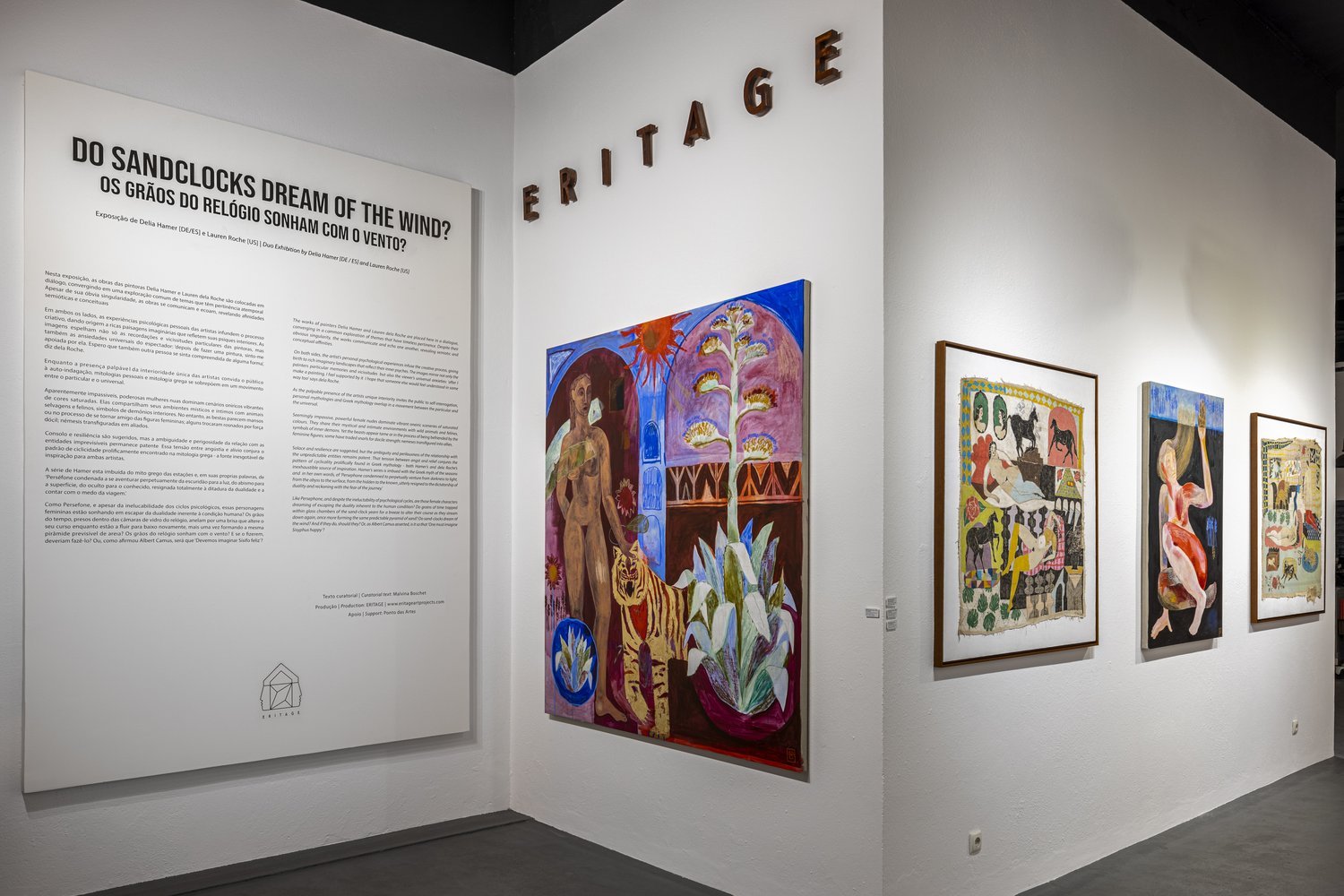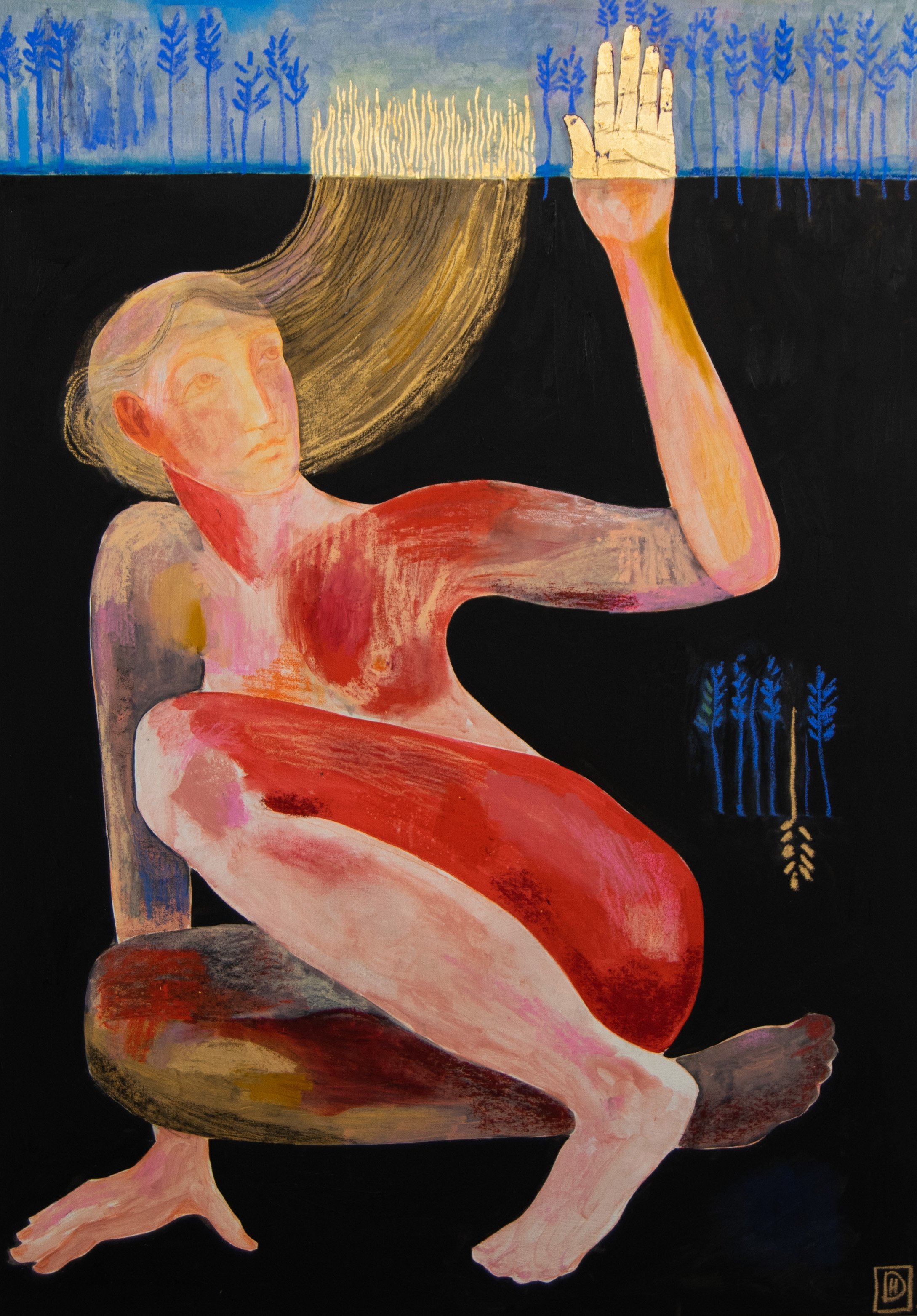DO SAND-CLOCKS DREAM OF THE WIND?
Duo exhibition with Lauren de la Roche
ERITAGE ART PROJECTS , LISBON
June 2022
The works of painters Delia Hamer and Lauren dela Roche are placed here in a dialogue, converging in a common exploration of themes that have timeless pertinence. Despite their obvious singularity, the works communicate and echo one another, revealing semiotic and conceptual affinities.
On both sides, the artist’s personal psychological experiences infuse the creative process, giving birth to rich imaginary landscapes that reflect their inner psyches. The images mirror not only the painters particular memories and vicissitudes, but also the viewer’s universal anxieties: ‘after I make a painting, I feel supported by it. I hope that someone else would feel understood in some way too’ says dela Roche.
As the palpable presence of the artists unique interiority invites the public to self-interrogation, personal mythologies and Greek mythology overlap in a movement between the particular and the universal.
Seemingly impassive, powerful female nudes dominate vibrant oneiric sceneries of saturated colours. They share their mystical and intimate environments with wild animals and felines, symbols of inner demons. Yet the beasts appear tame or in the process of being befriended by the feminine figures; some have traded snarls for docile strength; nemeses transfigured into allies.
Solace and resilience are suggested, but the ambiguity and perilousness of the relationship with the unpredictable entities remains patent. That tension between angst and relief conjures the pattern of cyclicality prolifically found in Greek mythology - both Hamer’s and dela Roche’s inexhaustible source of inspiration. Hamer’s series is imbued with the Greek myth of the seasons and, in her own words, of ‘Persephone condemned to perpetually venture from darkness to light, from the abyss to the surface, from the hidden to the known, utterly resigned to the dictatorship of duality and reckoning with the fear of the journey.’
Like Persephone, and despite the ineluctability of psychological cycles, are those female characters dreaming of escaping the duality inherent to the human condition? Do grains of time trapped within glass chambers of the sand-clock yearn for a breeze to alter their course as they stream down again, once more forming the same predictable pyramid of sand? Do sand-clocks dream of the wind? And if they do, should they? Or, as Albert Camus asserted, is it so that ‘One must imagine Sisyphus happy’?
Text by Malvina Boschet



























